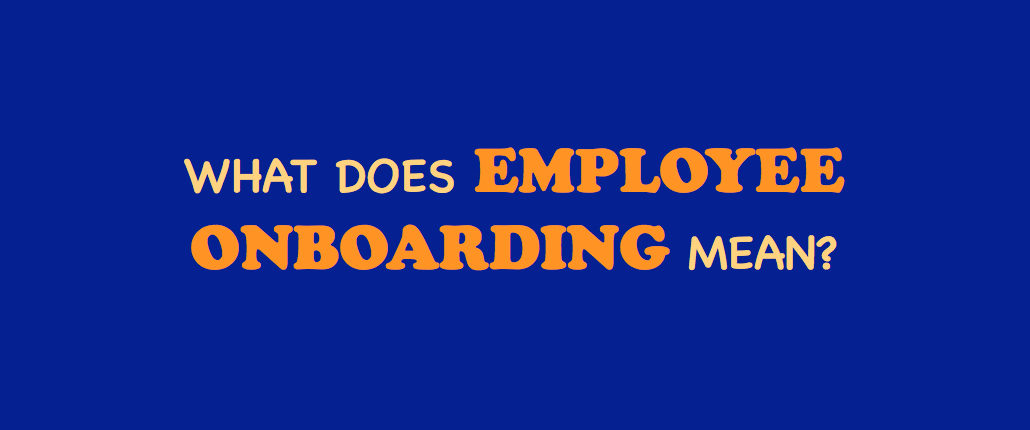
Many organizations don’t spend the resources or time to develop an effective employee onboarding process. Maybe they understand the opportunity that effective onboarding presents, but they haven’t made a case for change to upper-management. Or, maybe they don’t understand how solid onboarding practices allow:
- new employees to become more productive sooner
- organizations to scale and meet growth objectives
- HR professionals to address a skills gap present in their workforce
The Real Definition of Employee Onboarding
What is the definition of employee onboarding? What should be included in the employee onboarding process? And, I don’t just mean the technical definition that you would find on Wikipedia either:
“Onboarding, also known as organizational socialization, refers to the mechanism through which new employees acquire the necessary knowledge, skills, and behaviors to become effective organizational members and insiders.”
What I’m really asking is…what does onboarding mean at your organization? How does it feel to new hires and existing employees? Consider whether your answers make your onboarding process sound like a 3 day to-do list …or an inspiring journey comprised of activities and tasks that deeply impact your business outcomes.
Key Elements of Employee Onboarding
While it should come as no surprise that an effective onboarding process should include tactical items such as the completion of new hire paperwork and the provisioning of employee tools, it must address the cultural activities that help a new employee feel welcome, too. As you plan for change in your organization, examine opportunities to: enable; enlighten; and, impassion employees.
Enable
Enable your employees to be productive as soon as possible by preparing them for employment; gathering the necessary administrative documents with ease; and, providing them with the equipment, tools and resources necessary to carry out the responsibilities of their role in the most efficient way possible.
Consider whether automating new hire paperwork would help you better deliver on your employment brand, as well as whether its potential impact on KPIs justifies its implementation cost. Don’t forget to better enable your process stakeholders to fulfill their assignments, as well. Get their feedback on what they are doing that could be done by a tool, instead…so that they have time to refocus on more strategic activities that will better support your employment brand. The decision to use a tool to automate many onboarding-related tasks such as equipment provisioning, benefits enrollment, payroll coordination, training curriculum milestones and mentoring relationship activities will certainly impact the extent to which your organization will be able to introduce other concurrent changes to your onboarding process.
Enlighten
Enlighten new hires about the opportunity that exists with your organization by reinforcing their reasons for choosing you, and educating them about the potential career options available. A simple way to start down this path includes scheduling time for new hires and supervisors to reiterate the responsibilities of the position, discuss performance expectations, detail timelines for accomplishing mastery of skills and discuss the next big goals for the organization.
Think of this activity as an exercise in reducing buyer’s remorse. Just like receiving a phone call from the dealership after a new vehicle purchase helps to remind you of the heated seats you’re now enjoying, a conversation between a new hire and management helps the employee to feel assured that he was hired for a reason, and the job is indeed the same role for which he was initially excited enough to apply.
Employees that are aware of long-term learning opportunities, such as advanced training and mentoring, are more likely to stay with your organization, as well.
Impassion
Can you see how employees that are passionate about your organization drive your business outcomes? Think in terms of customer satisfaction and retention, employee referrals and greater attention to operational efficiency as a start. Job passion will grow when employees are challenged in productive ways, recognized for their efforts and championed for their results.
Communication is fundamental to the aforementioned activities, and it can be fostered effectively early on through frequent, intentional opportunities for new hires to engage with others in your organization. Many firms get this “social” part of the equation right, but maybe at the expense of also managing onboarding-related tasks successfully. Or, some organizations stop socializing after the obligatory new hire lunch on day one of employment. Don’t stop doing lunch…but start thinking beyond the first week for chances for new employees to collaborate with others.
How Long Should Employee Onboarding Last?
Just as our perception of “personnel” department duties has dramatically evolved over past decades into our modern view of HR responsibilities, so should our standards for the ideal length of the onboarding process evolve. Expand your definition beyond the first day and the first week. Actually, expand it to include pre-boarding before the first day on the job, too.
It hurts to lose talent. But, it’s even more painful to lose great employees in the first two years of their employment. We spend so much time on the candidate sourcing, screening and selection processes. So it’s understandably frustrating when new employees don’t stay with an employer longer. The costs rack up (turnover, recruiting, lost productivity) while other performance indicators slide down (employee retention, manager satisfaction, length of customer relationships).
Map out your onboarding touch points for the first month, first quarter, six months and year anniversary. After the time you spend on recruiting top talent, it’s anti-climactic to plan any other approach to onboarding, isn’t it?
Need help redefining the onboarding process at your organization? Find out more about ExactHire’s employee onboarding software, and then contact us to schedule a live demo or request a price estimate.
Image credit: Puzzle Blanc by Groume (contact)






